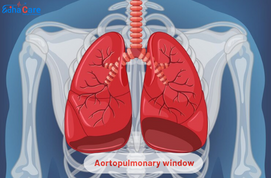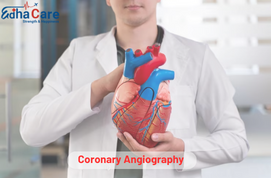Aortopulmonary window

An aortopulmonary window is an uncommon congenital heart condition characterized by an abnormal opening that exists between the ascending arteries and the main pulmonary artery. Because of this flaw, blood can flow between the two main veins improperly mixing oxygen-rich and blood with little oxygen. Trouble breathing, heart murmurs, and cyanosis—a bluish coloring of the skin—may all be symptoms, though they can vary according to how severe the problem is. In order to avoid problems and enhance long-term results, treatment usually entails surgery to block the improper passage between the aorta and the pulmonary artery. This procedure is frequently carried out in infancy or early childhood.
Book an AppointmentAbout Aortopulmonary window
Symptoms: In newborns, cyanosis (bluish staining of the skin), heart murmurs, respiratory discomfort, and inadequate weight gain are all possible signs of an aortopulmonary window.
Causes: The disorder is brought on by a defect in fetal development that prevents the pulmonary arteries and aorta from properly septating.
Remedies: The main course of treatments for an aortopulmonary window is surgery. To restore normal blood flow and avoid consequences from mixing oxygen-rich and oxygen-poor blood, the improper contact between the pulmonary artery and the aorta is closed surgically. For the best results, an early diagnosis and swift surgical treatment are essential.
Procedure of Aortopulmonary window
Diagnosis: Echocardiography, cardiac catheterization, or imaging tests like MRIs or CT scans are commonly used to diagnose the illness.
Preoperative assessment: Patients go through a comprehensive preoperative assessment, which includes an evaluation of their heart functions and any related anomalies.
anesthetic: Prior to the start of the surgical process, the patient is given general anesthetic.
Surgical technique: Depending on the anatomy and state of the patient, the surgeon may choose to make a thoracotomy or median sternotomy incision to reach the heart.
Closure: Surgical methods are used to cut off the aberrant link between the main pulmonary artery and the ascending aorta.
Repair of related defects: During the operation, any related heart problems, such as ventricular septal defects, may also be fixed.
Post-operative care: After surgery, patients receive adequate post-operative care to achieve optimal recovery and are continuously monitored in the critical care unit for hemodynamic stability.
Require Assistance?
Get A Quick Callback From Our Healthcare Experts
Other Specilities We Cover

Robotic Heart Bypass Surgery

Heart Bypass Surgery




